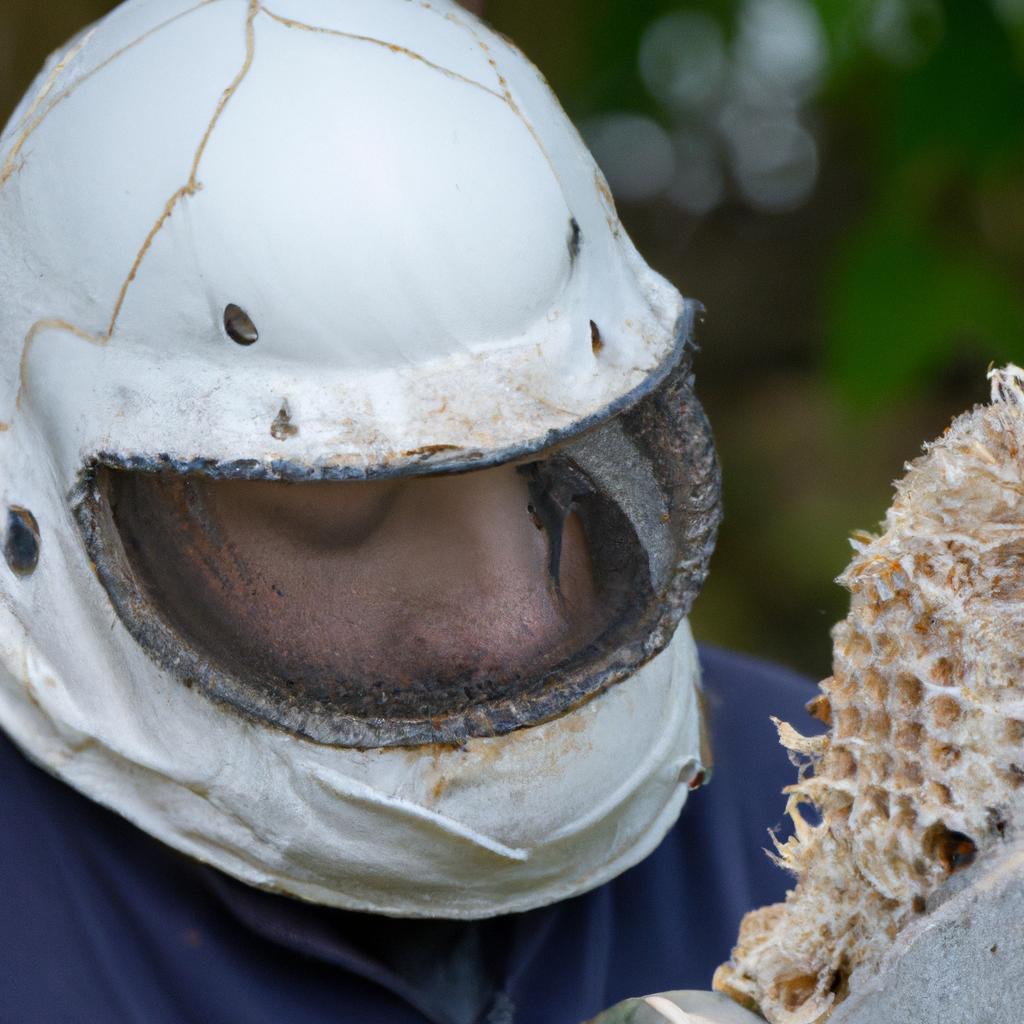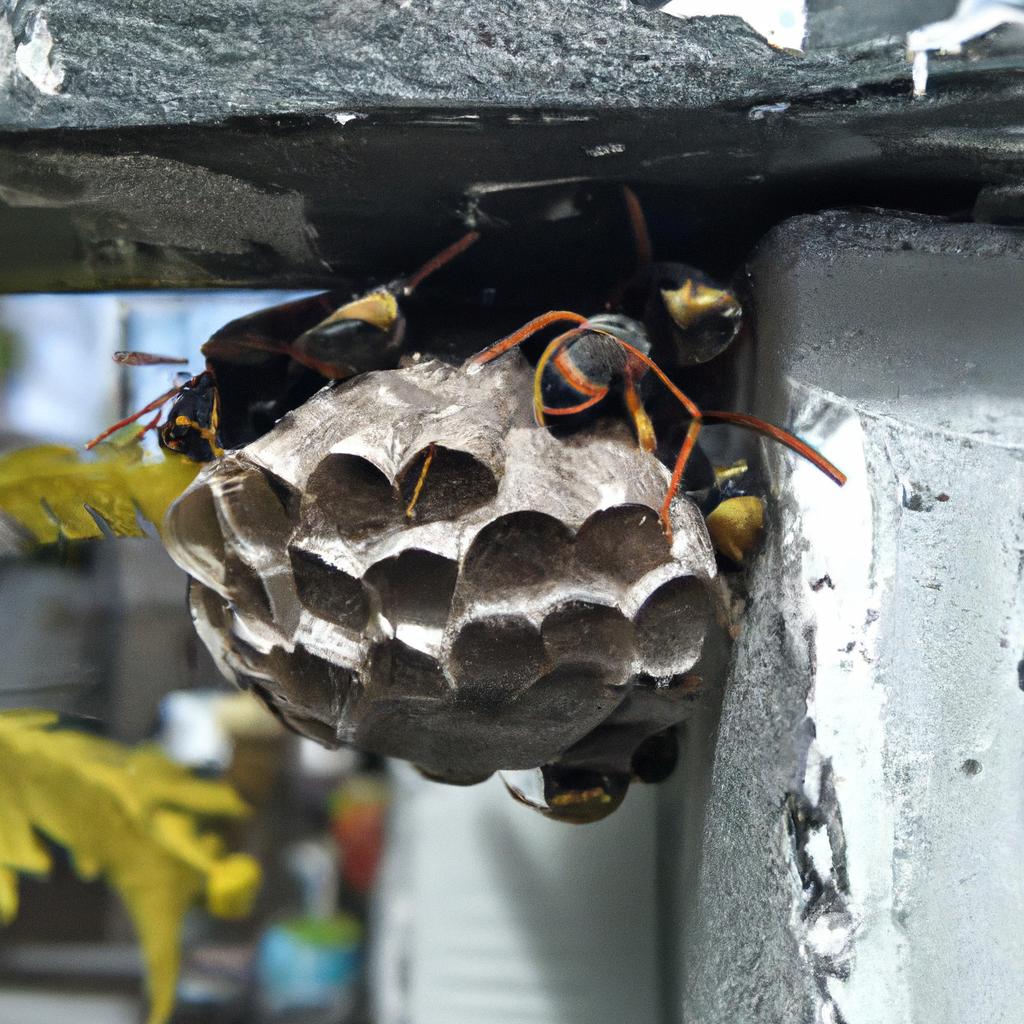Wasp nests can be a nuisance, especially when they are located near your home or workplace. It can be challenging to determine if a wasp nest is empty or not, and attempting to remove an active nest can be dangerous. In this article, we will provide you with a comprehensive guide on how to tell if a wasp nest is empty and what to do if it is not.
Importance of Identifying an Empty Wasp Nest

Identifying an empty wasp nest is crucial for several reasons. Firstly, it will save you from unnecessary panic and fear. Secondly, it will help you determine if it’s safe to remove the nest or if you need professional help. Lastly, it will prevent wasps from building another nest in the same location in the future.
Signs of an Empty Wasp Nest

There are several ways to determine if a wasp nest is empty or not. Here are some signs to look out for:
Absence of Wasp Activity
The most apparent sign of an empty wasp nest is the absence of wasp activity. If you don’t see any wasps flying in and out of the nest, it’s a good indication that the nest is empty. However, it’s essential to note that wasps are most active during the day. So, checking during the night may not be an accurate way to determine if the nest is empty.
Physical Inspection of the Nest
Another way to check if a wasp nest is empty is by physically inspecting it. If you can get close to the nest without disturbing it, you may be able to detect whether it’s empty or not. An empty nest will have a different appearance than an active one. It may be discoloured, dusty, and may have spider webs or other debris on it.
Keep reading, next sections are “Listening for buzzing sounds” and “Precautions when checking a wasp nest”.
Listening for Buzzing Sounds
If you’re hesitant to get too close to the nest, you can listen for buzzing sounds to determine if it’s active or not. Place your ear close to the nest and listen for any buzzing or humming sounds. If you don’t hear anything, it’s likely that the nest is empty.
However, it’s essential to approach the nest with caution when listening for sounds. If the nest is active, the wasps may become agitated and attack you, even if you’re not disturbing the nest.
Precautions When Checking a Wasp Nest
It’s essential to take precautions when checking a wasp nest, whether you suspect it’s empty or not. Here are some safety measures to keep in mind:
Protective Gear
Wearing protective gear is crucial when dealing with wasp nests. Wear long-sleeved shirts, pants, gloves, and a hat with a veil to protect your face and neck. It’s also a good idea to wear closed-toe shoes or boots.
Time of Day to Check
Be mindful of the time of day when checking a wasp nest. Wasps are most active during the day, so it’s best to check the nest in the early morning or late evening when they are less active. Avoid checking the nest during the middle of the day when wasps are more likely to be out and about.
Moreover, never shine a flashlight into the nest at night because it may attract wasps and make them more aggressive.
By taking these precautions, you can minimize the risk of being stung by wasps and ensure your safety while checking a wasp nest.
Keep reading, next sections are “What to do if the wasp nest is not empty” and “Preventing wasp nests from forming”.
Preventing Wasp Nests from Forming
Preventing wasp nests from forming is the best way to avoid the hassle of dealing with them. Here are some measures you can take to prevent wasp nests from forming:
Regular Inspection of the Property
Regularly inspecting your property can help you identify potential nesting areas and take measures to prevent wasps from building nests. Look for areas where wasps are likely to build nests, such as eaves, overhangs, and other sheltered areas. If you notice any wasp activity, take immediate action to prevent them from building a nest.
Removal of Potential Nesting Areas
Removing potential nesting areas is another way to prevent wasp nests from forming. Seal all cracks and crevices in walls and foundations, and repair any damaged screens or vents. Also, keep your property clean and free of debris, as wasps are attracted to cluttered areas.
Conclusion
In conclusion, identifying an empty wasp nest is essential for your safety and peace of mind. Signs of an empty wasp nest include the absence of wasp activity and physical inspection of the nest. Always take precautions when checking a wasp nest, including wearing protective gear and checking during the right time of day.
If the wasp nest is not empty, it’s best to seek professional help for removal. Preventing wasp nests from forming involves regular inspection of your property and removal of potential nesting areas.
Remember, if you’re dealing with wasp nests, always prioritize your safety and seek professional help when necessary. For more information on beekeeping and pest control, visit BeeKeepinglove.com.
